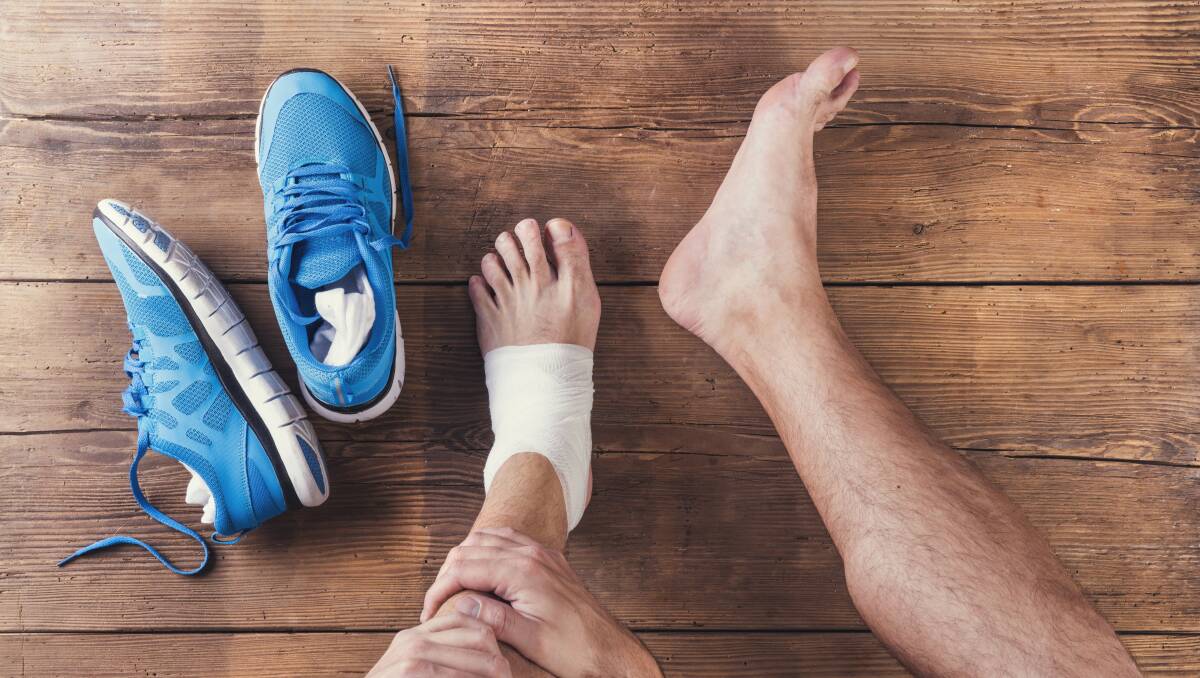
What injuries should I be aware of this footy season?
In an emergency department (ED), the most common injury we see is ankle sprains, or lateral ligament injury.
It accounts for 10 per cent of all ED presentations and commonly occurs in men ages 18-30 who engage in sports.
Neglecting to get ankle sprains treated can cause problems including chronic painful instability, and early arthritis, so it is best to seek medical advice for your injury, and continue to look after your ankle even after it has healed.
Dr Anubhav Sathu
It happens when the foot or ankle rolls inwards, causing the ankle to bear the weight of the body, often caused by joint weakness from a pre-existing injury or things like running on an uneven surface or in shoes with the wrong heel height.
While we see a lot of football players with the ankle ligament injury, it can happen in other sports too such as soccer, netball and hockey, along with running and hiking.
If you experience an ankle ligament injury you might feel a cracking or popping sensation, and the ankle will immediately begin hurting, with swelling and deep red and blue bruising – and sometimes you won’t be able to walk on it.
Treatment involves a thorough examination of the injury, where you will receive a mobility test and may get an x-ray or MRI to determine the position and extent of the damage.
A mild injury could be a stretched ligament or mild tear to the ankle ligaments, whereas a more serious injury can occur in a small proportion of cases.
You may have seen athletes out for an entire season due to an ankle injury – this is likely from a high-grade ankle sprain that has left them with an unstable joint.
Surgery is an option for severe injuries, however it is usually performed on people who have had persisting issues, and are experiencing pain, ankle instability and inability to get back into normal activities.
Neglecting to get ankle sprains treated can cause problems including chronic painful instability, and early arthritis, so it is best to seek medical advice for your injury, and continue to look after your ankle even after it has healed.
This means seeing your doctor regularly and even consulting a physiotherapist to develop a plan for injury prevention.
How soon can I return to sport?
Your return to exercise will depend on the extent of the damage.
If it’s a stable injury or mild sprain, you will be advised to use the RICE treatment, where you use Rest, Ice, Compression and Elevation along with non-steroidal anti-inflammatory pain relief, like ibuprofen, for a week or two before commencing regular sporting activities.
You may also be advised to have your joint strapped to help you play sport in the first few months following injury.
More extensive injuries will require immobilisation of the joint, but this doesn’t mean you will be off your feet entirely.
Most often patients use a moon boot and then undergo a progression of rehabilitative training to regain strength and movement in the joint.
This can take up to 8-12 weeks.
- Today’s answer is provided by Brisbane orthopaedic surgeon Dr Anubhav Sathu, through HealthShare, a digital company dedicated to improving the health of regional Australians.
- Submit questions, and find more answers, at healthshare.com.au.
